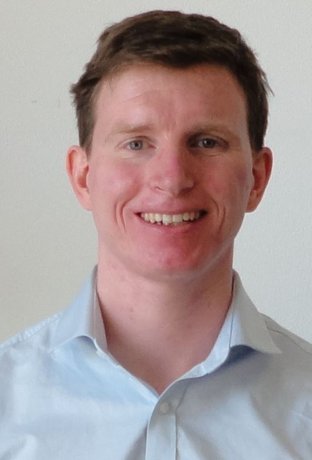Towards parallel-in-time simulations of turbulent Rayleigh-bénard convection
Gijs Kooij is a PhD Student in the research group Mathematical Modeling and Simulation, his Supervisor is prof.dr.ir. B.J. Geurts from the Faculty of Electrical Engineering, Mathematics and Computer Science (EEMCS)
Rayleigh-Bénard (RB) convection is a type of natural convection that occurs when a layer of fluid is heated from below and cooled from above. Flows of this kind appear frequently in engineering and in nature. One could think of the Earth's atmosphere for example. This thesis is focussed on the development of numerical methods for simulations of RB convection. With the rise of modern computers direct numerical simulation (DNS) has become common practice for (relatively) moderate Rayleigh numbers. In other words, the equations of motion are solved accurately without modelling the small-scale features of the turbulent flow. In the first two chapters we discuss several aspects of DNS of RB convection. In the latter two chapters we explore the possibility of parallelization in time.

In Chapter 2, we study the effect of rotation on the heat transfer in RB convection. With use of a spectral element method, we perform a series of simulations at different Rayleigh and Rossby numbers. Rotation can have a large influence on the structure of the flow. This effect is visible in the appearance of numerous vertical vortices that reach from the boundary layers to deep into the domain, which leads to enhanced transport of heat. The rate of rotation has however no observable effect on the scaling of the Nusselt number with the Rayleigh number, beyond the transition to turbulence (Ra > 10^8). In this study, we also demonstrated that the spectral element method is suitable for simulating (rotating) RB convection, yielding accurate results at appropriate resolution.
Over the years, many different numerical methods have been developed for DNS of turbulent flows. In Chapter 3, we analyse four such methods. The first two are specifically designed for RB convection in simple geometries: AFiD/RBflow, a second-order finite difference method and Goldfish, a fourth-order finite volume method. The other two methods are intended for general applications in complex geometries: Nek5000, a spectral element method, and OpenFOAM, a second-order finite volume method. With Nek5000 we have chosen spectral elements of order eight. We perform a convergence test at Ra=10^8 for meshes with different resolutions. All methods converge to the same Nusselt number at sufficient resolution. Large differences are however observed in the computational cost (measured per gridpoint), which mainly illustrates the contrast between specialized and general codes. The specialized codes are optimized for simple geometries. The differences are considerably reduced when the achieved accuracy is taken into account though. At equal resolution, Nek5000 is for example the most expensive code, but also the more accurate one. All in all, AFiD/RBflow and Goldfish appear to be the most efficient choices, concerning accuracy against computational cost, with computational costs up to ten times lower compared to Nek5000 and OpenFOAM.
Because the number of cores in new supercomputers keeps increasing, parallelization becomes even more important. An interesting approach is a parallelization in time, especially when the traditional parallelization in space is already saturated. Such an approach would allow to reduce the wall-clock time of a desired simulation. A recent algorithm for parallelization in time is the Paraexp algorithm, developed for linear initial value problems. In Chapter 4, we present an extension of the Paraexp algorithm to nonlinear partial differential equations (PDE) using the exponential block Krylov (EBK) method as a base approach. This parallel-in-time method is also suitable for linear PDEs. For a first impression of the parallel efficiency, we estimate the computational time by measuring the computational processes individually on a serial computer. Here, the parallel communication is assumed to be very small. We first test the method for the advection-diffusion equation. Even with a low diffusion coefficient, the parallel efficiency remains high. The application to nonlinear PDEs is illustrated with the viscous Burgers equation. Our method also shows good parallel efficiency in that case at different values of the viscosity coefficient.
An essential element of the Paraexp algorithm is the so-called exponential integrator, which can solve homogeneous initial value problems very fast. The integration methods are based on the actions of the matrix exponential or related matrix functions on a vector. This can be done, for example, using Krylov subspace methods. In Chapter 5, we introduce an exponential integrator for the incompressible Navier-Stokes equations based on the EBK method. The application to the Navier-Stokes equation is not straightforward because of the presence of the continuity equation. This imposes a constraint on the velocity field for it to be divergence-free. We show that the governing equations can be reduced to an ordinary differential equation using a projection operator on divergence-free vector fields. Several numerical experiments, including a lid-driven cavity flow, show that the EBK method converges to the reference solution. An important property of the EBK method is the possibility to parallelize it in time with the framework discussed in Chapter 4. Initial estimates show that parallel speedup is possible, even with the proposed prototype method.
